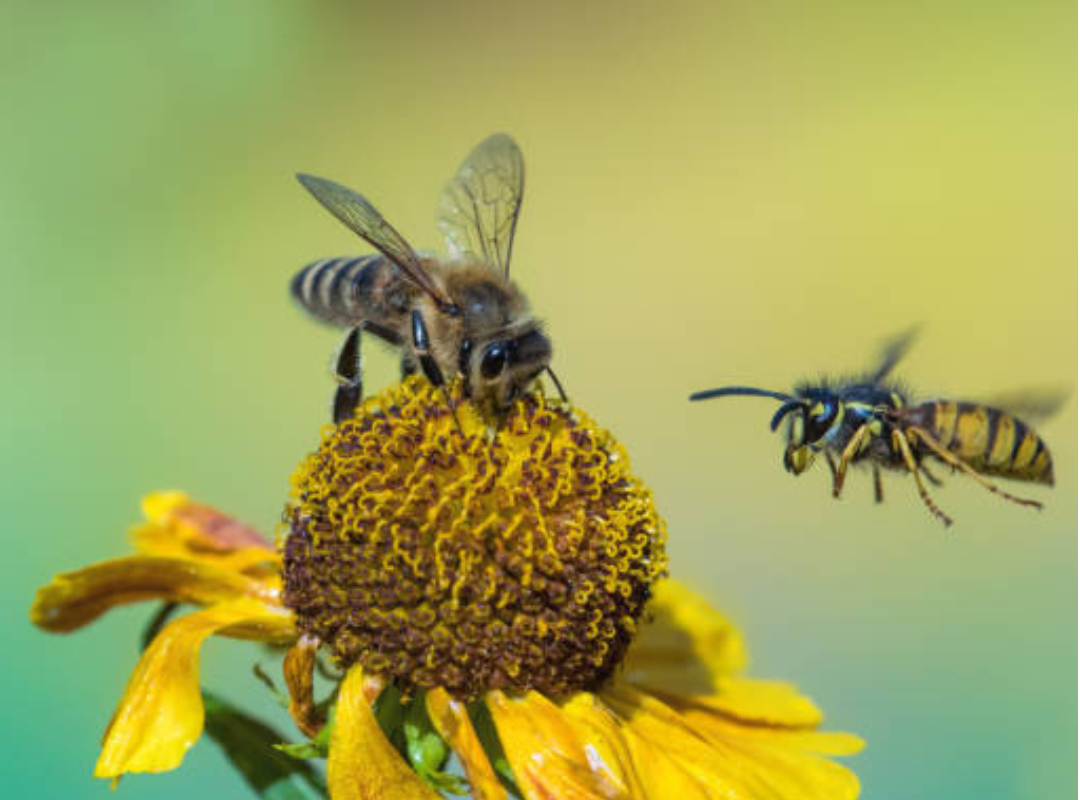
As spring and summer bring warmer weather, they also usher in an increase in buzzing visitors. Whether you’re in a backyard, park, or commercial space, spotting flying insects can raise questions—and concern. One of the most common dilemmas people face is understanding the difference between a bee and a wasp. Knowing how to distinguish between the two is not just about curiosity—it can impact safety, response, and treatment. In this guide, we’ll dive into the topic of bees vs wasps, exploring how to tell them apart and what actions to take when you encounter either one.
Physical Differences: Bee vs Wasp
When it comes to identifying bees vs wasps, their physical characteristics are a great place to start. Bees, such as honeybees and bumblebees, are typically round with fuzzy bodies. This hair helps them collect pollen, which they carry back to their hives. They have shorter legs and appear more robust in shape. Wasps, on the other hand, are sleek and slender with smooth, shiny bodies. Their long legs dangle when they fly, and they generally have a more aggressive appearance. Wasps also have a distinct, narrow waist between the thorax and abdomen.
Behavior and Aggression: Understanding Reactions
Another key factor in the bee vs wasp debate is behavior. Bees are typically gentle unless provoked. They often focus on pollination and will only sting if they feel threatened. Interestingly, most bees can only sting once, as their stinger detaches and results in their death. Wasps, including yellow jackets and hornets, tend to be more aggressive. They are carnivorous, scavenging for protein-rich food, especially at outdoor gatherings. Wasps can sting multiple times without harming themselves, making them a greater concern during repeated encounters, especially in commercial spaces or high-traffic areas.
Nesting Habits and Locations
One major clue in identifying bees vs wasps is their nesting behavior. Bees prefer building hives in tree cavities, walls, or protected spaces, often using wax to construct structured honeycombs. Wasps create nests from chewed wood fibers, forming a papery material. These nests are often found hanging under eaves, decks, or inside attics. Commercial properties, in particular, are vulnerable to large wasp colonies due to accessible entry points and food waste. If you’re managing a business and discover an infestation, it’s wise to consult a trusted commercial bee removal service in Los Angeles, California, to evaluate and safely handle the situation without harming the ecosystem.
Environmental Role and Benefits
Despite the fear they often cause, both bees and wasps contribute to ecological balance. Bees are critical pollinators, supporting the growth of fruits, vegetables, and flowering plants. Without bees, many crops would fail to thrive. Wasps also serve a purpose, though less celebrated. They act as natural pest control agents by feeding on insects like caterpillars, flies, and aphids. So, in the bee vs wasp discussion, it’s important to recognize that both species play vital roles. Disturbing or eliminating them without understanding their impact could disrupt your local environment.
How to Respond to an Encounter
Knowing how to react when encountering either species is crucial for safety. If you see a bee, stay calm and still. Swatting or sudden movements can make it feel threatened, increasing the chance of being stung. Wasps, due to their aggressive nature, require even more caution. Avoid wearing bright colors or perfumes, and never disturb a visible nest. When dealing with repeated sightings or suspected nesting, especially in workplaces or public zones, it’s best to call professionals. Proper response ensures your safety while minimizing harm to these beneficial insects.
Prevention Tips for Home and Business Owners
Whether you’re managing a home or a commercial establishment, there are effective ways to prevent bees and wasps from nesting. Seal cracks in walls, rooflines, and vents. Keep trash bins tightly sealed, and avoid leaving sugary drinks or food uncovered outdoors. Trim overgrown plants and trees, and consider using decoy nests to deter territorial wasps. For larger properties or businesses, professional assessments and preventive treatments can offer long-term solutions. In the ongoing bee vs wasp battle, prevention is not just about comfort—it’s about responsibility to both guests and nature.
When to Seek Professional Help
DIY methods have their limits. If you’re dealing with a visible nest, repeated stings, or suspect a colony within your building’s structure, call experts. Trained technicians can identify the species and implement safe, humane removal techniques. It’s especially important in urban settings like Los Angeles, where environmental policies may also govern how removals are handled. Professional help reduces risks, ensures legal compliance, and preserves ecological balance. In short, the stakes of the bee vs wasp issue grow higher when nests are in high-risk or commercial zones.
Conclusion
In the showdown of bee vs wasp, understanding the distinctions can make a world of difference, whether for your safety, property management, or environmental impact. From physical traits to nesting habits and behaviors, recognizing these differences empowers you to respond appropriately. More importantly, it helps build a respectful approach to creatures that play essential roles in nature. While bees and wasps may look similar at first glance, knowing what to do when they show up ensures you protect both your space and the ecosystem around you.